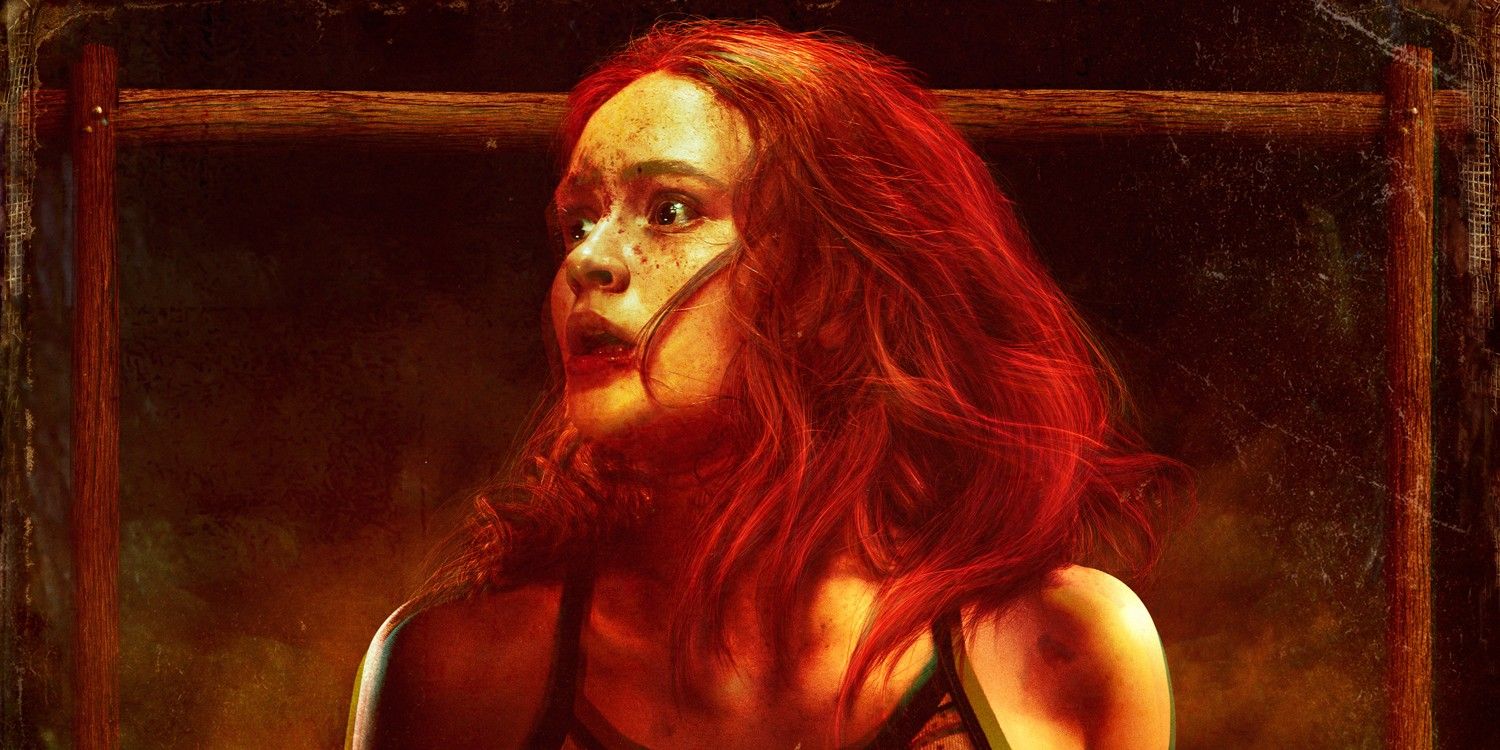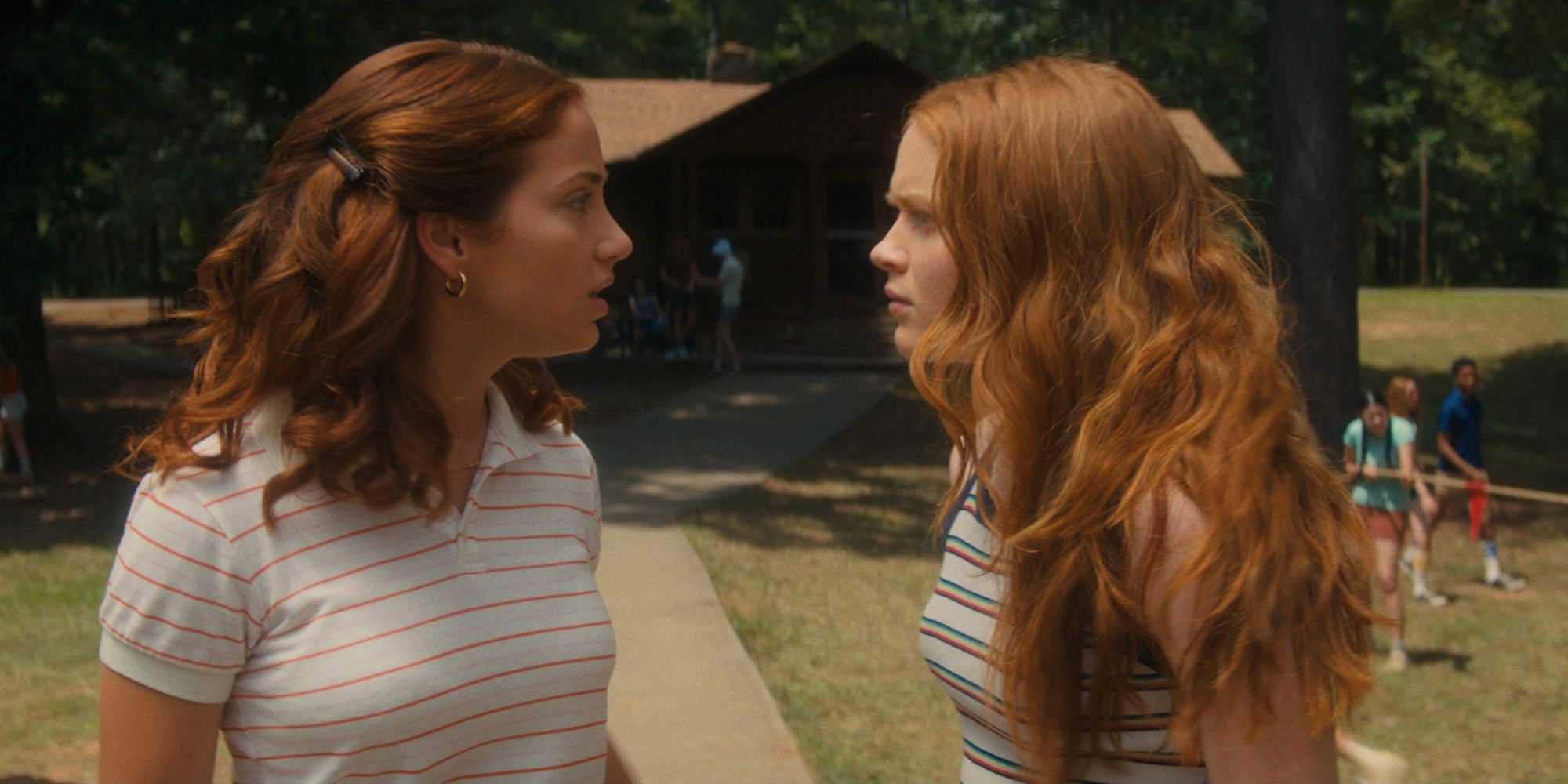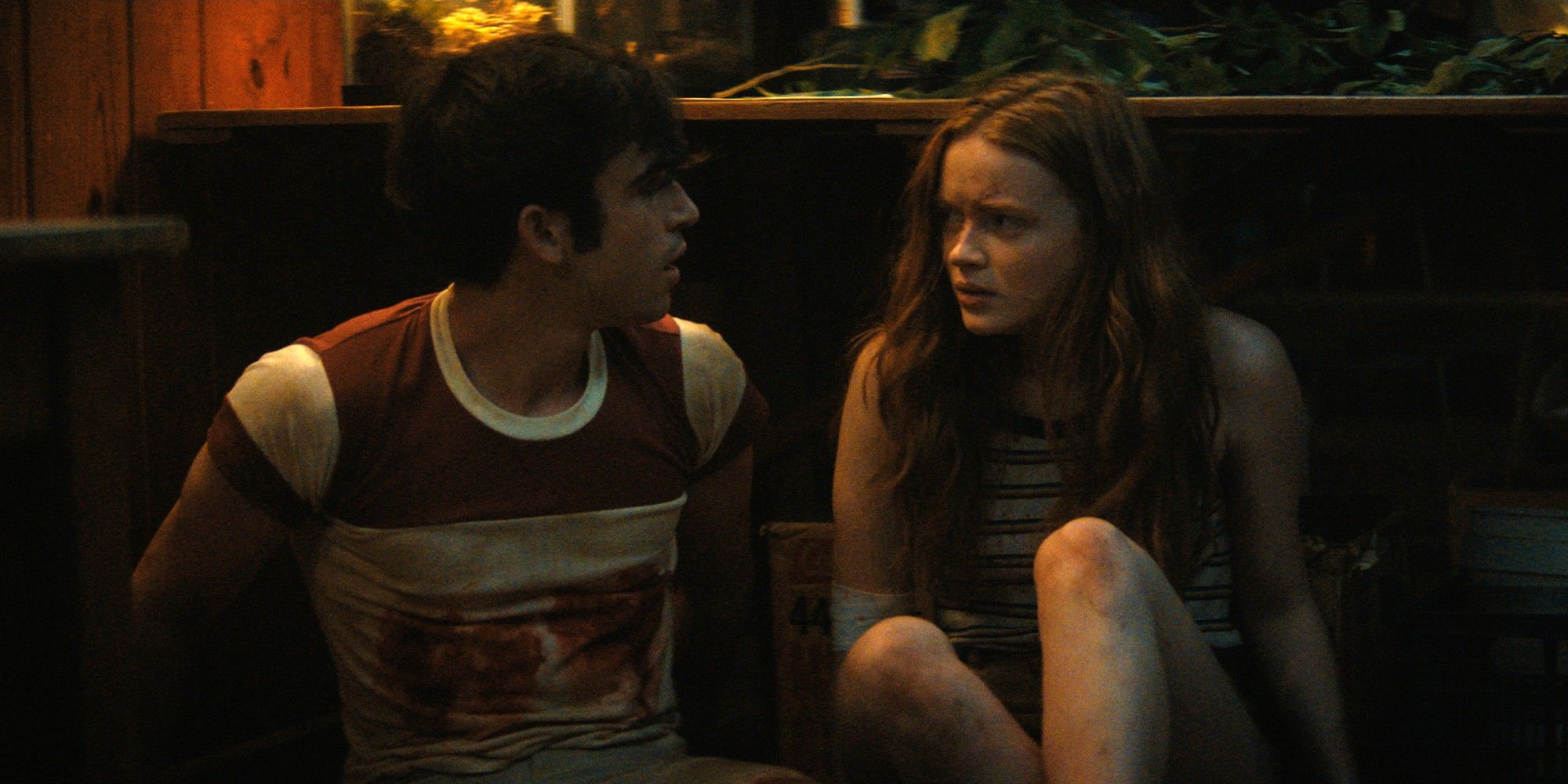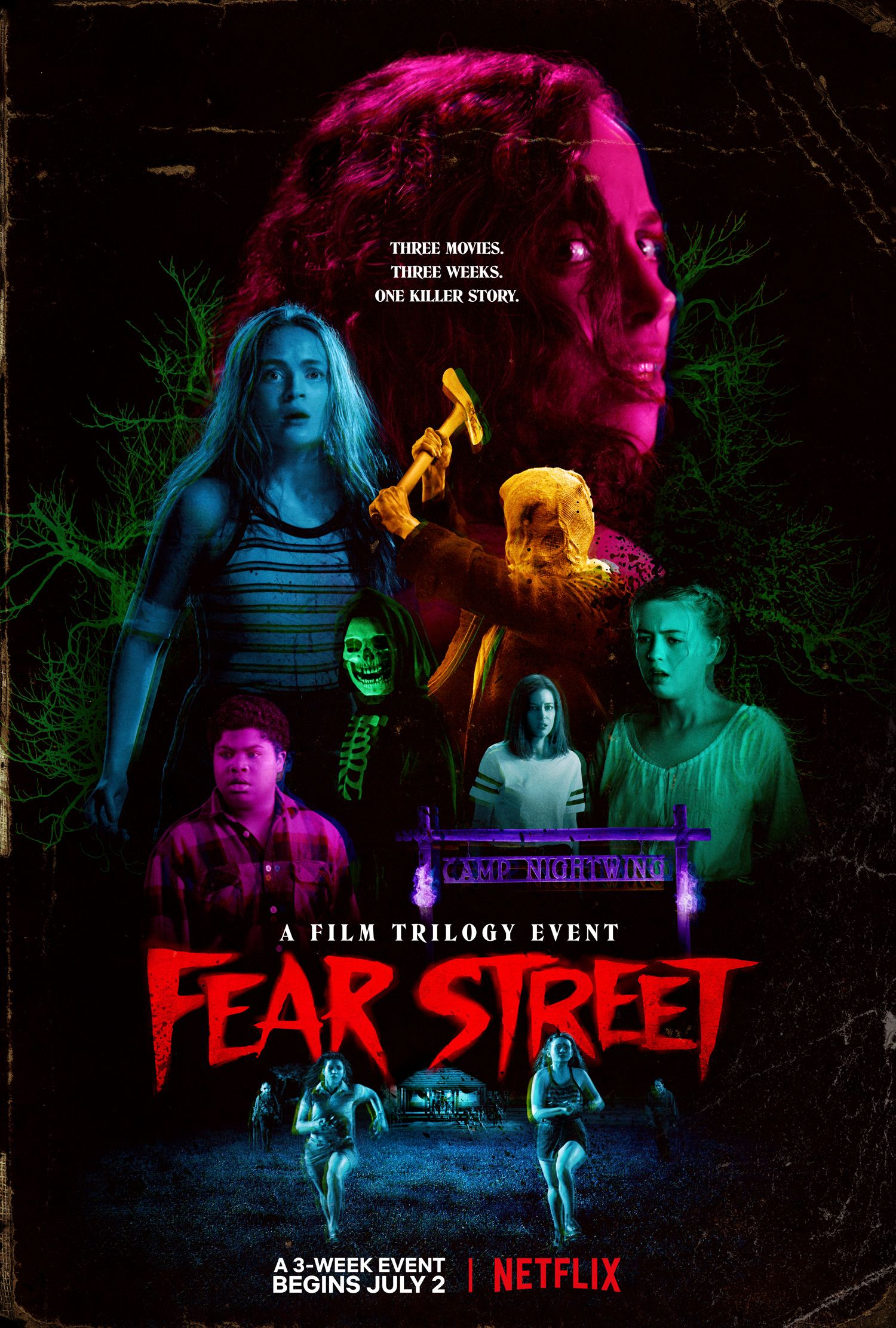After kicking off their trilogy with Fear Street Part 1: 1994 last week, director Leigh Janiak's sequel Fear Street Part 2: 1978 offers a whole new slasher style horror story that pulls from a different decade's classics. All three of the movies (including the still forthcoming Fear Street Part 3: 1966) are based loosely on R.L. Stine's Fear Street books, a series aimed at slightly older readers than the author's well-known Goosebumps collection, but which tell an original story. That story began in 1994, which did much of the heavy lifting in terms of world-building and introducing the towns of Shadyside and Sunnyvale along with the legend of the witch Sarah Fier, and continues in 1978 to further unravel that mystery. Fear Street Part 2: 1978 is a fun enough riff on 70s slashers, but works better as the middle chapter in Netflix's horror movie trilogy.
Picking up after the cliffhanger ending of 1994, Deena (Kiana Madeira) and her brother Josh (Benjamin Flores Jr.) track down the mysterious C. Berman (Gillian Jacobs) and convince the woman to tell the story of how she survived the massacre at Camp Nightwing in 1978. She delves into a tale about Ziggy Berman (Sadie Sink) and her older sister Cindy (Emily Rudd), who try to survive a night of deadly murders committed by one of their friends - who's been turned into an axe-wielding killer by Sarah Fier's curse. While Ziggy is focused on saving her sister, with some help from the young Sunnyvaler Nick Goode (Ted Sutherland), Cindy investigates the witch's curse with her friend Alice (Ryan Simpkins) in hopes of finding a way to end it. The whole story proves helpful to Deena in 1994, who is determined to save her girlfriend Sam (Olivia Welch).
Like Part 1: 1994 before it, Fear Street Part 2: 1978 splits its time between paying homage to classic horror movie slashers and continuing to develop the storyline of Sarah Fier, which will culminate in Part 3: 1966. The weaving together of the two very different horror premises works slightly better in 1978 largely because it's more simplified, helped by the fact that 1994 did most of the world-building. That said, there's still a sense Ziggy and Cindy are in two completely separate horror movies, with one sister running from a single-minded killer and the other investigating a supernatural curse. When these story threads are finally brought together in the third act, that's when 1978 finally feels like a cohesive movie (even if it's short-lived). Overall, there's less of a sense of the filmmakers' inclinations to pay homage to the past and forge a new path being at war with each other, but it is still baked into the core of Fear Street.
What further helps Fear Street Part 2: 1978 to be a slightly more entertaining horror movie - besides not getting bogged down in world-building - is its different way of scaring viewers. Whereas Part 1: 1994 relied on shadowy figures and gruesome kills reminiscent of 90s horror movies, Part 2: 1978 is a mix of the unsubtle, unstoppable killer from classic 70s slashers and truly creepy, witchy visuals. As Janiak's Fear Street trilogy gets closer to the heart of Sarah Fier, it becomes clearer that that's what's most exciting in this trilogy, and what gives the director something new to showcase instead of rehashing what came before. Along with the Sarah Fier elements, Part 2: 1978 culminates in a brutal killing sequence that makes Fear Street stand out amid other slashers - for better or for worse.
Ultimately, Fear Street Part 2: 1978 benefits not only from being the second chapter in a trilogy - so it doesn't have to do much to introduce viewers to its world since that was done in 1994 - but from the fact that it's paying homage to more classic horror movies. Whereas 90s slashers are more recent in pop culture, so 1994 was perhaps viewed through a more critical eye, 1978 is referencing films that came out two decades earlier. It's likely to be just as imperfect a tribute to those who are dedicated fans of 70s slashers, just as 1994 was, but it works fine as a fun throwback. Similar to Fear Street Part 1: 1994, Part 2: 1978 also utilizes some of the era's most popular music to aid in creating a nostalgic atmosphere, trading Nine Inch Nails and Radiohead for Blue Öyster Cult and The Runaways. It gives both movies a sense of nostalgia even if they're more of a caricature of the actual time periods.
It all makes for a fun enough experience, however, continuing what worked in Fear Street Part 1: 1994 and offering further development of the trilogy's overall story. Because of the nature of this particular trilogy, which is truly more of a limited TV series with very long episodes, it wouldn't make sense to watch any of these films on their own since it wouldn't really tell a complete story. So Fear Street Part 2: 1978 is certainly worth viewing for those that watched Part 1: 1994 and enjoyed it - or those who simply want to see this story through to the end. Janiak delivers more horror movie homages and continues forging ahead through Fear Street's Sarah Fier storyline, but similar to Part 1: 1994, Fear Street Part 2: 1978 mainly serves to set up the final chapter rather than offer a truly standalone experience. How it all comes together in Fear Street Part 3: 1966 remains to be seen.
Fear Street Part 2: 1978 starts streaming on Netflix Friday July 9. It is 109 minutes long and rated R for bloody horror violence, sexual content, nudity, drug use, and language throughout.
Let us know what you thought of the film in the comments section!




